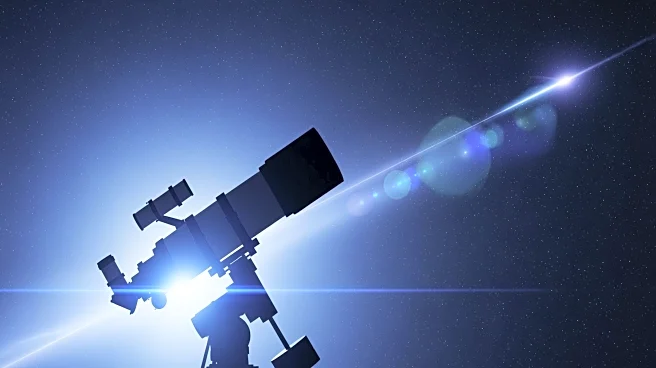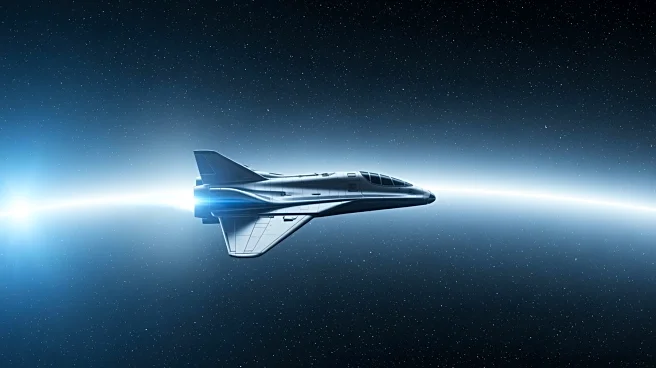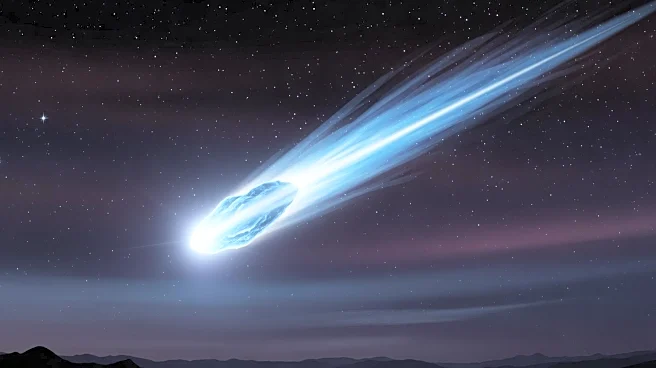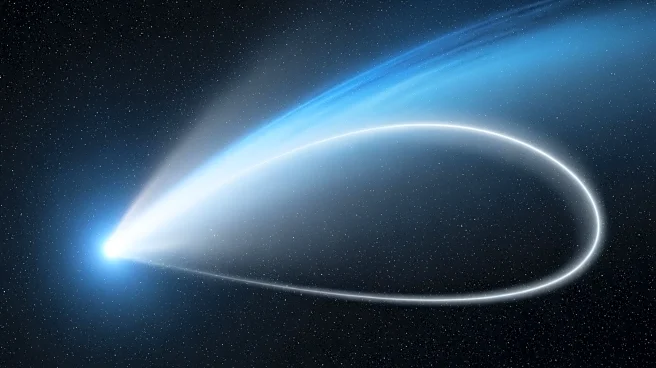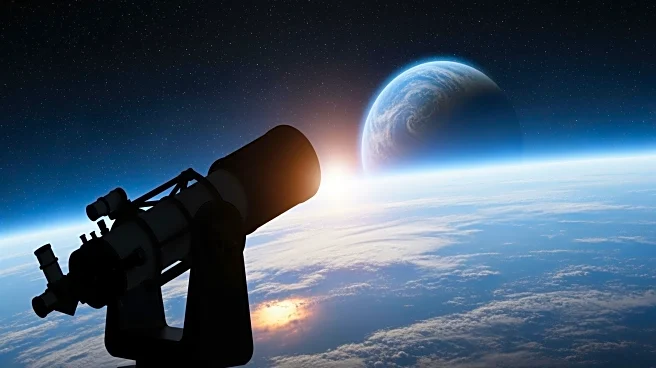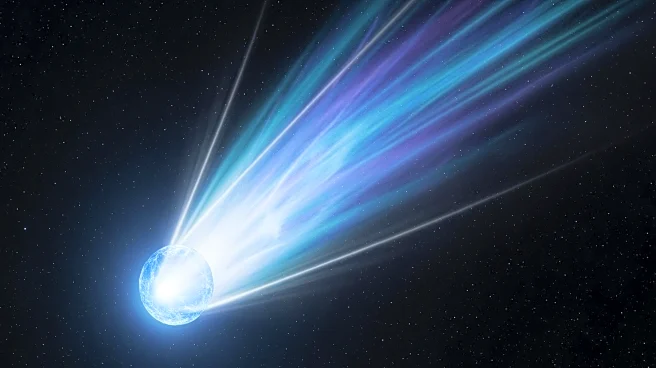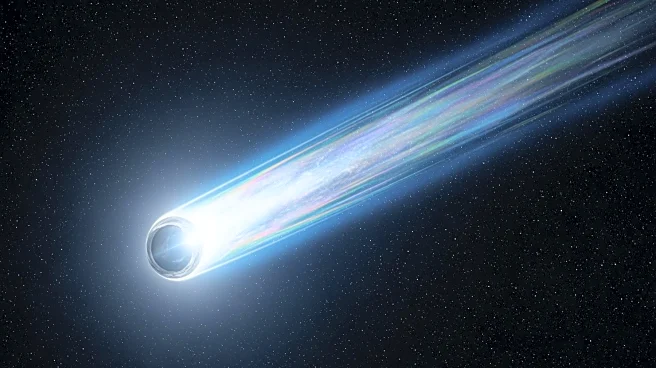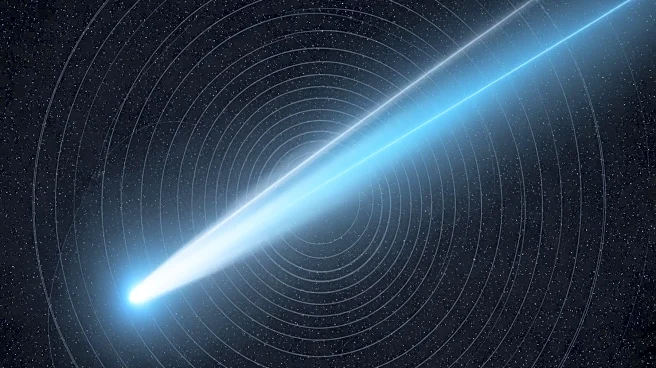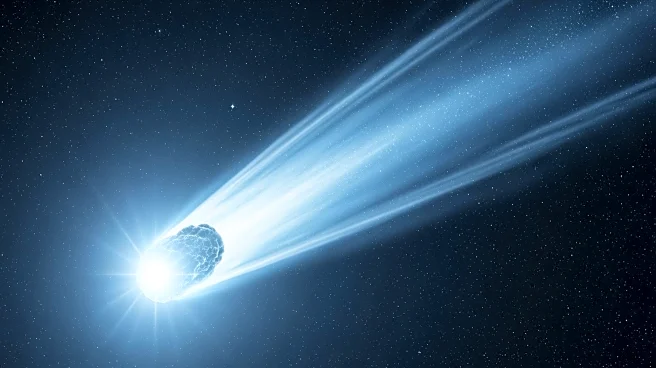What's Happening?
Avi Loeb, a prominent astrophysicist, has detailed the anomalies associated with the interstellar object 3I/ATLAS. Observations from July and August 2025 indicated that 3I/ATLAS rotates with a period of
16.16 hours. However, recent images show tightly-collimated jets extending over a million kilometers, which should have been smeared by the object's rotation. Loeb suggests several possibilities for this phenomenon, including sun-induced outgassing at specific angles or technological thrusters maintaining jet orientation. The object has exhibited multiple anomalies, such as a retrograde trajectory aligned with the ecliptic plane, unusual nickel content in its gas plume, and extreme negative polarization. These observations raise questions about the nature of 3I/ATLAS, whether it is a natural comet or something more technologically advanced.
Why It's Important?
The study of 3I/ATLAS is significant as it challenges existing understanding of interstellar objects. The anomalies observed could have implications for astrophysics, potentially indicating advanced technology or new natural phenomena. If the jets are indeed maintained by technological means, it could suggest the presence of intelligent life or advanced technology beyond Earth. This could impact scientific theories about the universe and prompt further investigation into interstellar objects. The findings could also influence public interest and policy regarding space exploration and the search for extraterrestrial life.
What's Next?
Further data is expected in the coming weeks, which will help determine the nature of 3I/ATLAS. If the jets' speed and mass flux align with natural comet sublimation, the object's rank on the Loeb Scale may be reduced. Conversely, inconsistencies could raise its rank, suggesting non-natural origins. Continued observation and analysis will be crucial in understanding the object's characteristics and potential implications for interstellar studies.
Beyond the Headlines
The anomalies of 3I/ATLAS could lead to ethical and philosophical discussions about the existence of extraterrestrial life and humanity's place in the universe. The possibility of technological thrusters raises questions about the potential for interstellar travel and communication with other civilizations. Long-term, this could influence cultural perceptions of space exploration and the search for life beyond Earth.
